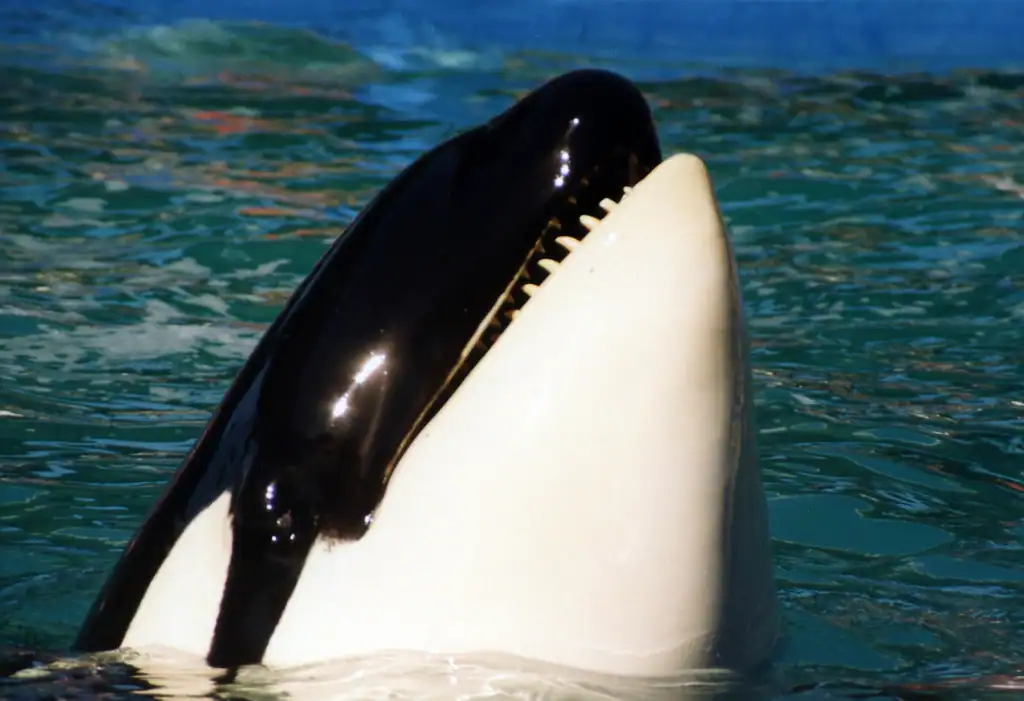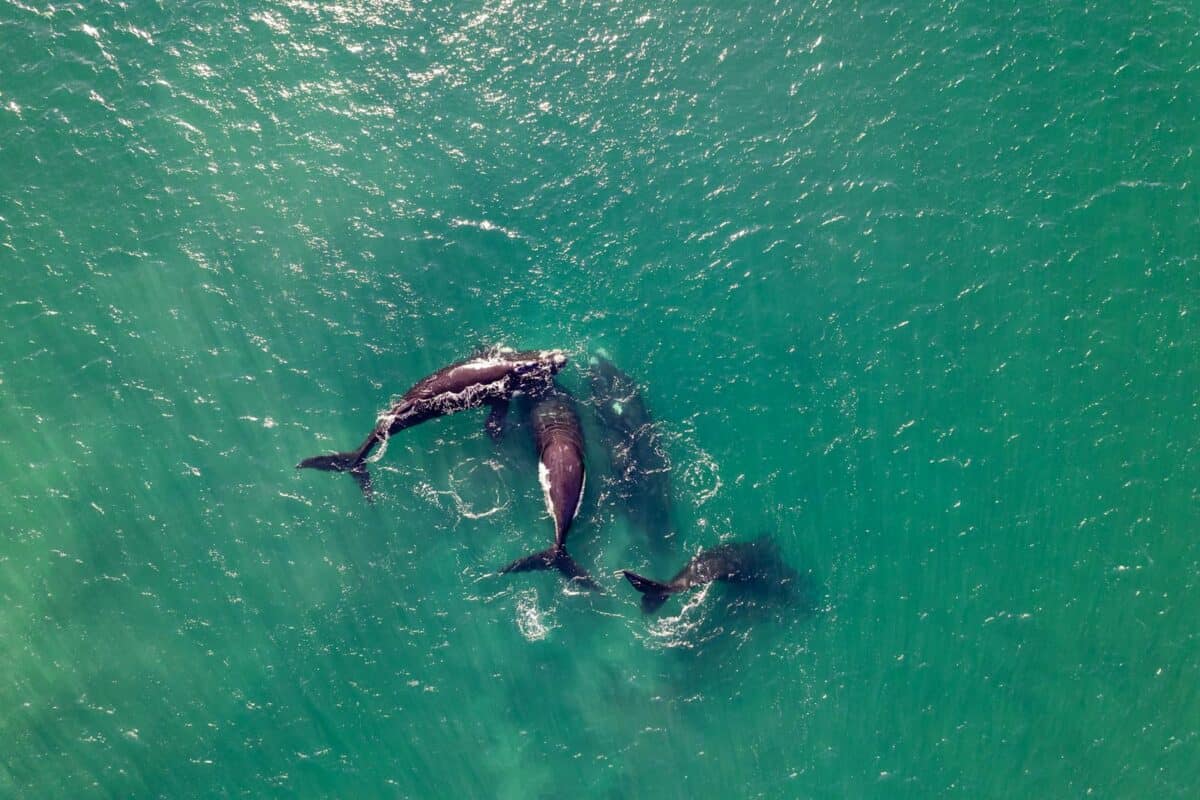It’s hard not to be amazed by orcas. With their jet-black backs, striking white patches, and powerful presence, orcas have captured the imagination of people across the globe. Some call them killer whales, but there’s so much more to these ocean giants than their nickname suggests. Dive in, and you’ll discover a world of astonishing intelligence, family bonds that rival our own, and a set of survival skills that make orcas the true rulers of the sea. Whether you’ve seen them leap from icy waves or only caught a glimpse of their fin on TV, these 19 facts about orcas will leave you awestruck, surprised, and maybe just a little bit more in love with these extraordinary animals.
19 Orcas Are Actually Dolphins

Many people are surprised to learn that orcas aren’t whales at all—they’re actually the largest members of the dolphin family. Their scientific name, Orcinus orca, may sound intimidating, but it places them squarely in the same group as playful bottlenose dolphins. Orcas share many traits with other dolphins, like their social behaviors, complex vocalizations, and incredible intelligence. They just happen to be much, much bigger. Next time you see an orca, remember: you’re looking at the ocean’s most powerful dolphin.
18 They Have Unique Dialects

Orcas don’t just communicate—they have their own “languages.” Different groups, known as pods, use distinct sets of clicks, whistles, and pulsed calls. These sounds can be so specific that scientists can identify which pod an orca belongs to just by listening. It’s a bit like having regional accents or dialects, and it shows just how socially complex these animals really are. Some researchers even think that these dialects help orcas recognize family members and avoid mixing with strange pods.
17 Orcas Have Powerful Family Bonds

Orca families are incredibly tight-knit. Many orcas stay with their mothers for their entire lives, forming what scientists call matrilines. These family groups can include multiple generations, with grandmothers, mothers, and calves all swimming together. The matriarch—the oldest female—often leads the group, making key decisions about where to hunt and travel. It’s a bit like a big, extended family road trip, only this one never really ends.
16 They Hunt in Coordinated Teams

If you think teamwork is just for humans, think again. Orcas are masters of group hunting. They use clever strategies to catch their prey, often working together like a seasoned sports team. For example, some pods will herd fish into tight balls, while others will create waves to wash seals off ice floes. Each orca has a role to play, and they communicate constantly to make sure their efforts pay off. It’s an underwater ballet of brains and brawn.
15 They Eat a Wide Variety of Foods

Orcas have one of the most diverse diets of any marine predator. Some orcas specialize in hunting fish, while others go after seals, sea lions, dolphins, and even whales much larger than themselves. There are even reports of orcas preying on sharks and rays. This flexibility lets them thrive in oceans all around the world. Different pods have their own favorite foods and unique hunting techniques, passed down from generation to generation.
14 Some Orcas Are Specialists

Not all orcas eat the same things or hunt in the same ways. Some populations, known as “residents,” focus almost entirely on fish, mainly salmon. Others, called “transients” or “Bigg’s orcas,” prefer marine mammals like seals and porpoises. There are also “offshore” orcas that roam far from land and seem to favor sharks. These differences are so pronounced that scientists sometimes think of them as separate ecotypes—almost like different breeds of the same animal.
13 Their Color Pattern Is Camouflage

At first glance, an orca’s black-and-white coloring might seem designed to be noticed. But it actually helps them blend in. When seen from above, their dark backs match the deep ocean. From below, their white bellies blend with the lighter surface. The bold patches around their eyes and sides help break up their outline, making it harder for prey to spot them. It’s the ultimate disguise—nature’s own stealth suit.
12 Orcas Can Live Surprisingly Long Lives

Orcas aren’t just impressive in size—they can also live for decades. Female orcas often live into their 80s, and some have reached over 100 years old. Males tend to have shorter lifespans, averaging around 30 to 50 years. These long lives mean orcas have plenty of time to learn, teach, and care for their families. It’s no wonder grandmothers play such an important role in orca society.
11 They Use Echolocation to Hunt

Orcas don’t just rely on their eyesight—they have a built-in sonar system called echolocation. By sending out clicks and listening for the echoes, orcas can “see” underwater in total darkness or cloudy water. This lets them find fish hiding in crevices or pinpoint seals resting on ice. Some scientists compare echolocation to having X-ray vision or a natural submarine radar, giving orcas an edge over almost every other animal in the sea.
10 Calves Are Born Tail-First

Orca births are remarkable events. Unlike humans, orca calves are born tail-first, which helps prevent them from drowning during delivery. Newborns are usually about 8 feet long and can weigh up to 400 pounds—about the size of a large motorcycle! Mothers and other females in the pod surround the newborn, helping it reach the surface for its first breath. It’s a moment of teamwork, celebration, and hope for the next generation.
9 They’re Found in Every Ocean

Orcas are true globe-trotters. They’ve been spotted in all the world’s oceans, from the icy waters of the Arctic and Antarctic to the warm seas near the equator. Some populations stick to coastal areas, while others roam far offshore. This adaptability is part of what makes orcas so successful as a species. No matter where you go, there’s a chance an orca has swum there before you.
8 They’re At the Top of the Food Chain

Orcas have no natural predators. They sit right at the top of the marine food chain, sometimes called apex predators. Even the largest sharks tend to steer clear of orcas. This unmatched power means they can shape entire ocean ecosystems, influencing the populations of their prey and even altering the behavior of other marine animals. It’s a bit like being the king or queen of the sea.
7 Orcas Can Swim Very Fast

Despite their size, orcas are surprisingly speedy. They can reach bursts of up to 34 miles per hour—faster than most Olympic swimmers could ever dream of. This speed helps them chase down fast-moving prey and leap high out of the water. Watching an orca jump or “porpoise” alongside a boat is a breathtaking sight, and a reminder of just how athletic these animals are.
6 Their Brains Are Huge

Orcas have some of the largest brains in the animal kingdom. An adult orca’s brain can weigh up to 15 pounds, much heavier than a human’s. But it’s not just about size—the structure of their brains suggests they’re capable of advanced thinking, problem-solving, and even empathy. Some scientists believe orcas may have emotional lives as rich and complex as our own, which makes their social bonds even more meaningful.
5 They Can “Spyhop” and “Tail-slap”

Orcas have a whole repertoire of dramatic behaviors. “Spyhopping” is when they poke their heads out of the water to get a better look at what’s around them—almost like periscopes. “Tail-slapping” involves smacking their powerful tails against the surface, sometimes to stun prey or communicate with others. These behaviors aren’t just for show; they’re key parts of how orcas interact with their world and each other.
4 Orcas Are Featured in Myths and Legends

Across the world, orcas have inspired countless stories and legends. Indigenous peoples of the Pacific Northwest consider orcas to be powerful spiritual beings, sometimes even protectors of the sea. Elsewhere, sailors have told tales of orcas rescuing people or guiding lost ships. Whether as heroes or villains, orcas have always had a special place in human imagination—a testament to their charisma and mystery.
3 They Face Serious Threats

Despite their power, orcas are not invincible. Pollution, habitat loss, overfishing, and noise from ships all threaten their survival. Some populations, like the Southern Resident orcas in the Pacific Northwest, are critically endangered. Toxic chemicals build up in their bodies, and the decline of their favorite prey—like salmon—means food can be scarce. It’s a sobering reminder that even the rulers of the sea need our protection.
2 They Show Signs of Grief and Playfulness

Orcas are emotional creatures. There are documented cases of orca mothers carrying their dead calves for days, seemingly mourning their loss. At the same time, orcas love to play—tossing seaweed, riding waves, and even playing with other ocean animals like dolphins. These moments of joy and sorrow give us a glimpse into the rich inner lives of orcas, and make their stories all the more compelling.
1 Each Orca Has a Unique Dorsal Fin

No two orcas are exactly alike. Each individual has a unique dorsal fin—some tall and straight, others curved or nicked. Scientists use these “fin prints” to identify and track orcas over time, learning about their lives and travels. It’s a bit like a fingerprint for humans, and a reminder that every orca has its own story to tell.
Conclusion

Orcas are more than just ocean predators; they are intelligent, social, and deeply fascinating creatures that continue to amaze scientists and animal lovers alike. Their lives are filled with drama, teamwork, and emotion, making them one of the most captivating animals on the planet. With every new discovery, our appreciation for orcas only grows. Did you expect to be surprised by so much about these remarkable dolphins?
- 14 Dog Breeds That Love to Cuddle - August 9, 2025
- 11 Signs Your Horse Might Be Bored - August 9, 2025
- Jurassic World Dominion Dinosaurs - August 9, 2025

